GENERAL PATTON'S ENTRY INTO MANY, LA.
BY RICKEY ROBERTSON
Possibly the greatest fighting general in the history of the United States Army was General George S. Patton Jr. General Patton pushed both himself and his men during the Louisiana Maneuvers of 1941 tirelessly because he could see that America was being pushed into the war that was raging in Europe. Patton had been a mounted cavalry officer most of his career, and when he was chosen to become the commander of the 2nd Armored Division, many of the old mounted cavalry tactics that he had been taught he was able to use and perfect with his fast mechanized units.
During Phase 1 of the Louisiana Maneuvers of 1941 General Patton and the 2nd "Hell on Wheels" Armored Division were assigned to the Red 2nd Army. The 2nd Armored was bivouacked across the Red River near Montgomery, La. On September 15, 1941 at 0500 a.m. the maneuver began. General Patton's reconnaissance, artillery, and various infantry units quickly crossed the Grand Ecore Bridge north of Natchitoches and turned westward toward the Sabine River.
General Ben Lear, commander of the Red 2nd Army, had ordered General Patton and his armored units to attack all the way to the Sabine River on the western side of Many, La. and then were to turn due south and launch a flanking attack against the Blue 3rd Army. If this southward flanking movement along the Many-Florien-Hornbeck-Leesville highway worked, the Red 2nd Army would be able to attack and capture Leesville and Camp Polk.
General Patton's units travelled so fast that as the last units crossed the Grand Ecore Bridge in Natchitoches, his advanced units had already reached positions between Fort Jesup and Many. Joining Patton's convoys heading west were the 107th Cavalry Regiment and the 27th Infantry Division, who would guard his left flank from attack by the Blue 3rd army units. Always pushing his men to continue to advance, at Ft. Jesup his units attacked a mounted cavalry section of the Blue 1st Cavalry Division. This battle was fast and furious, with General Patton right in the midst of it. One of the 2nd Armored tanks during the heated engagement ran over and destroyed one of the historical markers at the site. He did not have time to stop because General Patton was leading the advance westward and was shouting to his tanks to keep moving. The faster the 2nd Armored could reach its objective at Many the faster it could pivot and turn southward .The 2nd Armored advanced quickly toward the town of Many, La. where at the intersection of present day La. Hwy. 6 and old U.S. Hwy 171 at St. John's Catholic Church they encountered a massive traffic jam. At this intersection General Patton's units had to begin their turn southward as they attempted to turn the flank of the Blue 3rd Army. The single Military Policeman at this important intersection could not get the traffic jam of peeps, trucks, civilian vehicles, and tanks unsnarled and moving south again. Up drove General Patton in his command car and he jumped out and began shouting, cursing, and moving the men and vehicles. With his loud bluster, General Patton began to bring order out of the traffic chaos and the long columns of military vehicles began slowly moving south. But due to the loud cursing and obscenities the parishioners at St. John's Catholic Church had their worship service completely disrupted! Finally the exasperated priest stopped Mass and walked outside to see what was causing this massive disturbance outside the church. He immediately saw and confronted General Patton and asked him to please lower his voice and quit his cursing as he was attempting to conduct worship services. General Patton did not argue or bicker with the priest. This may be the first time he was ever corrected and called down! Instead of lashing back at the priest, he apologized and turned the traffic control duties back over to the Military Policeman. As he mounted his command car General Patton saluted the priest and headed south with his advancing tanks! This story was repeated by the Catholic priest who was assigned to this parish for years after this event. He never forgot his face to face meeting with General Patton in the middle of the street in the midst of the traffic jam.
General Patton's entry in Many, La. is not like the conquering Roman generals who would enter Rome in triumph after returning from battle riding a white war horse. General Patton's entry is one of the true legends and historical facts of the Louisiana Maneuvers of 1941. I recently went to St. John's Catholic Church and visited this intersection that is still in use today and viewed the site of the traffic jam. As I stood and watched traffic I could almost see General Patton in the middle of the street shouting out directions as he unsnarled this traffic jam. Due to the historical significance of this site and of the event that took place here, there needs to be a historical marker erected here to mark the site of this historical event that involved one of America's most dramatic military commanders of World War II. This story is part of the history of the town of Many, La., the state of Louisiana, and the Louisiana Maneuvers. Let us never forget General Patton's entry into Many, La. in 1941 !
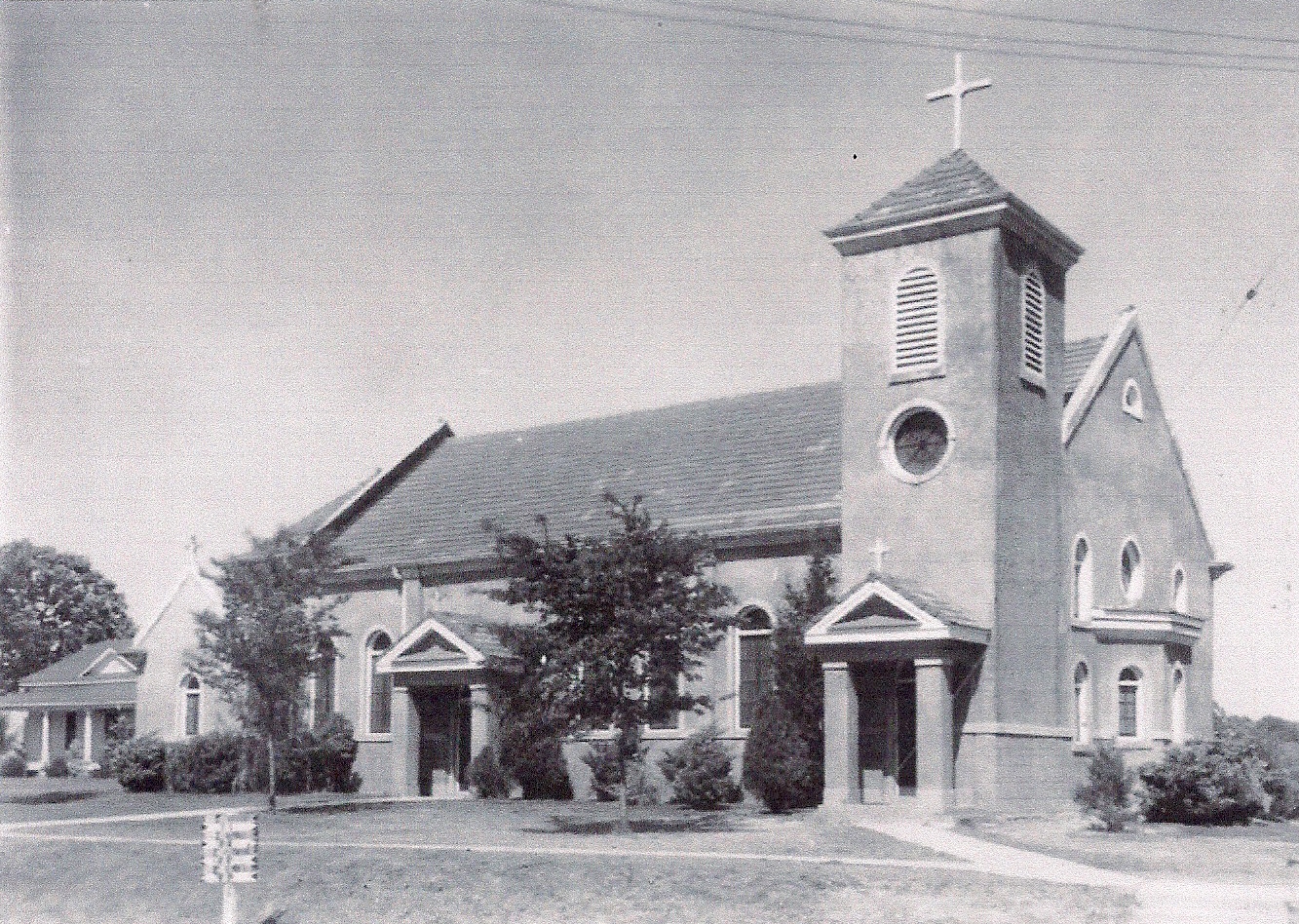
St. John's Catholic Church of Many, La. as it looked during the Louisiana Maneuvers of 1941. (State Library of Louisiana(http://www.state.lib.la.us)
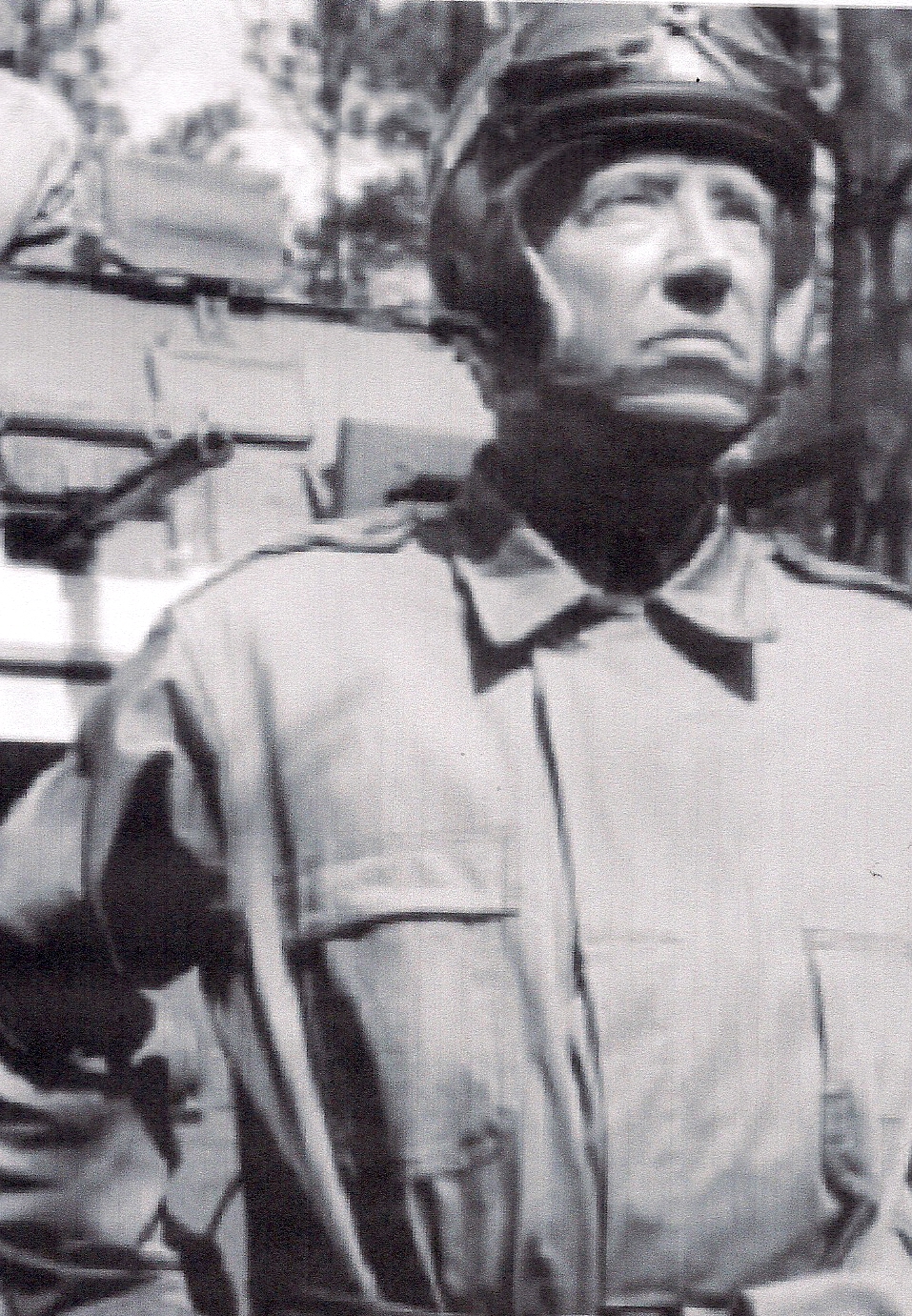
General George S. Patton Jr. commanded the 2nd Armored Division during the Louisiana Maneuvers and he created quite a scene upon entering Many, La. in 1941 at St. John's Catholic Church. (Robertson Collection)
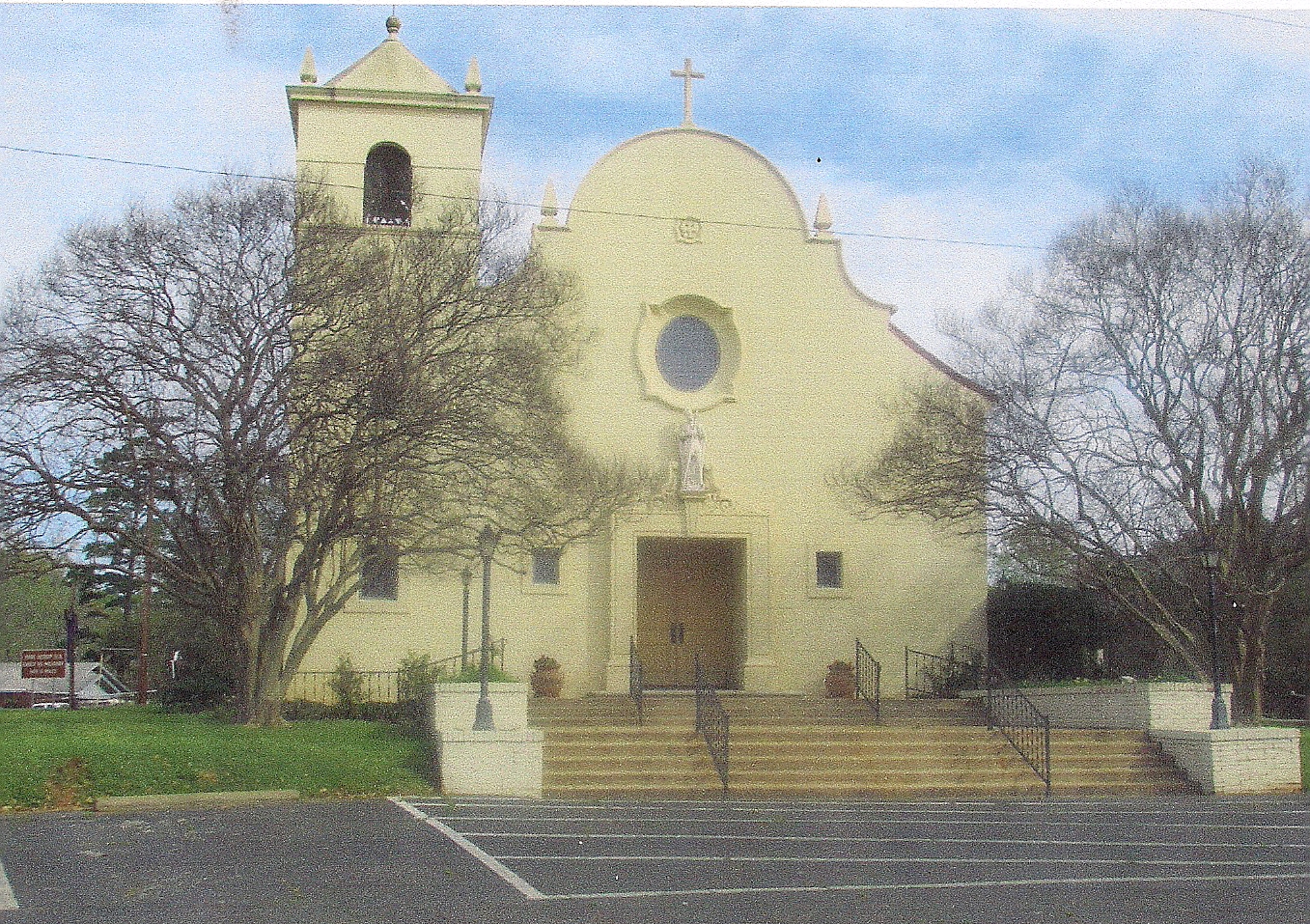
St. John's Catholic Church in Many, La. looking at it from the parking lot in March 2016. Beautiful architecture of the church is evident in the photograph.. (Robert Collection)
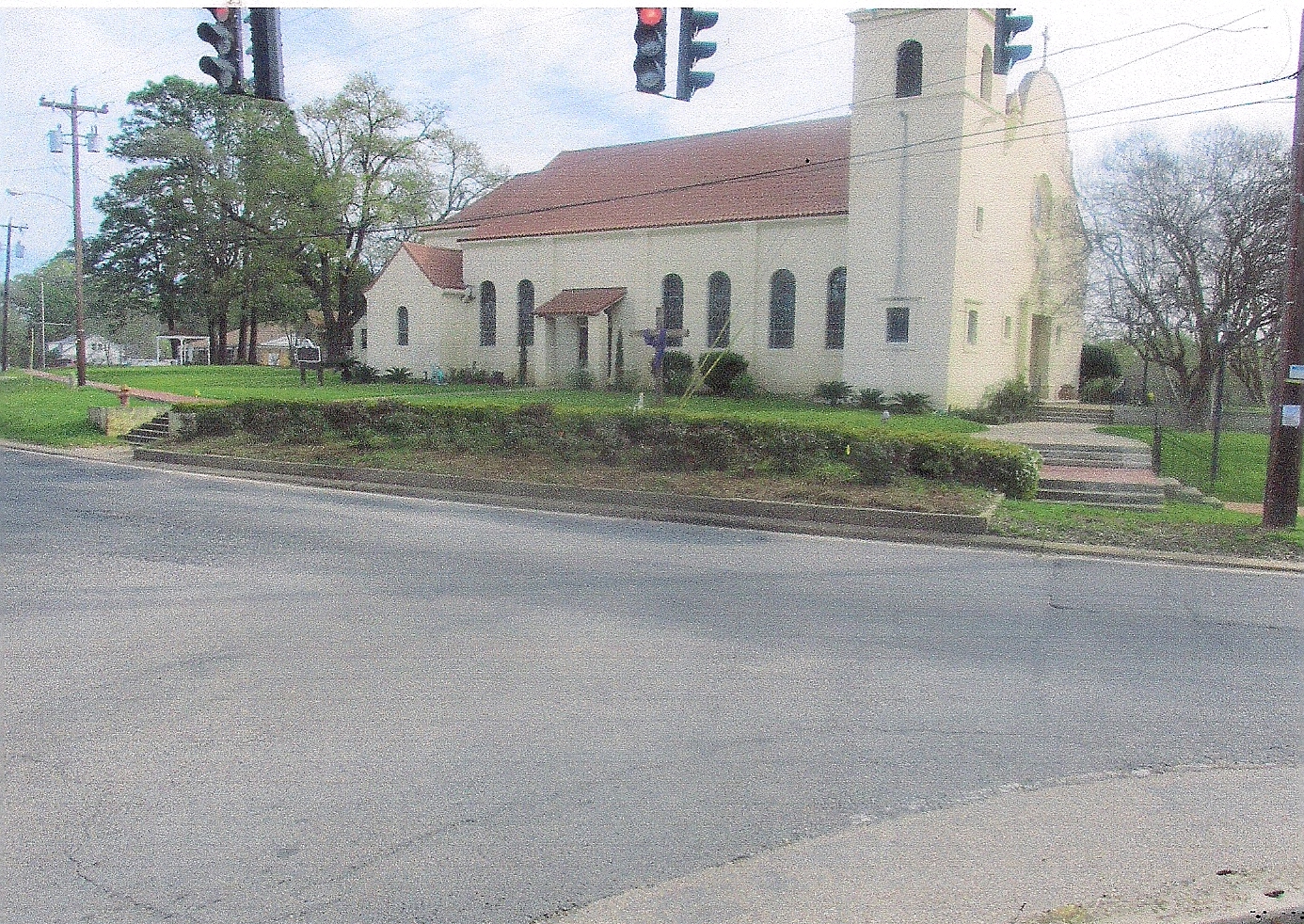
St. John's Catholic Church photographed in March 2016 from the same angle as the 1941 photograph. (Robertson Collection)
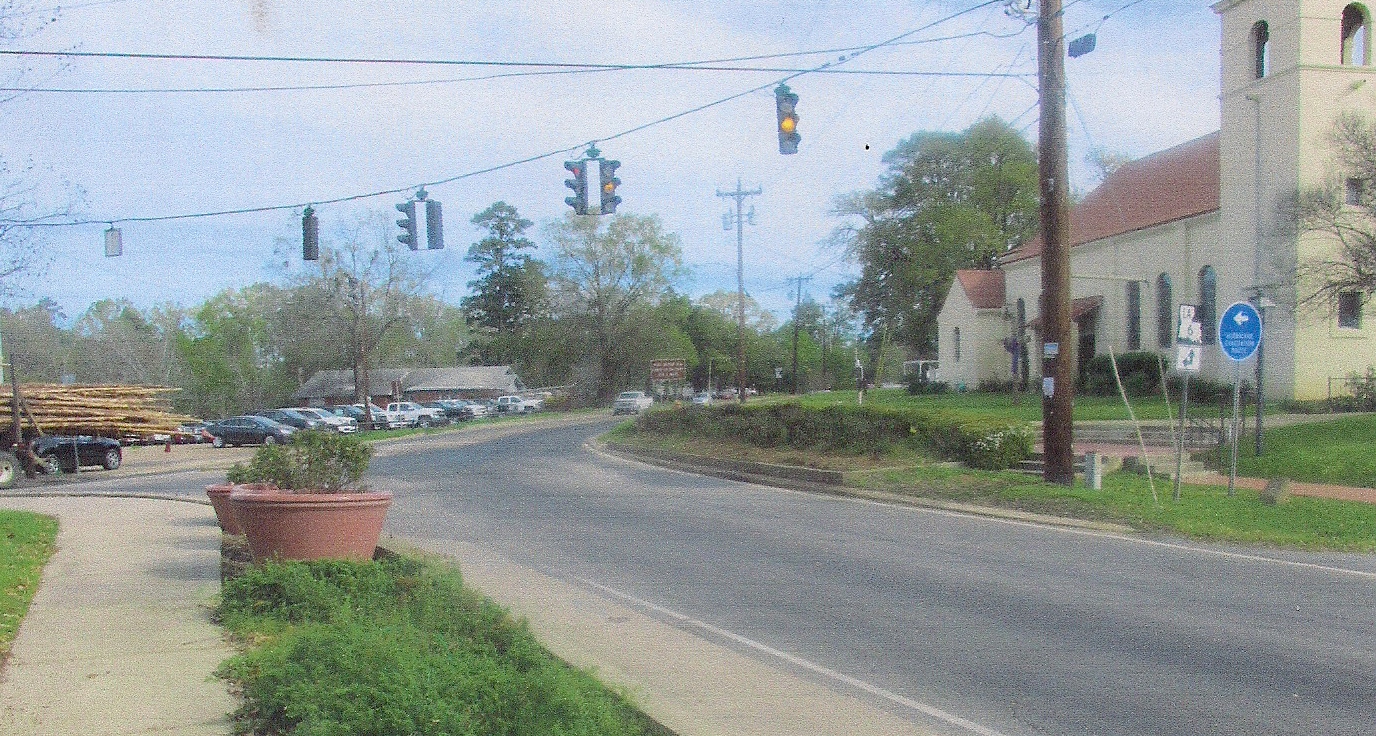
This is the intersection where the 2nd Armored Division became ensnarled in a traffic jam during the 1941 Louisiana Maneuvers and the site of General Patton bringing order to the chaos of the traffic jam. Photo taken in March 2016. (Robertson Collection)